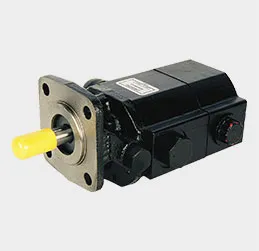die cast part
Die Cast Parts An Overview of Their Significance and Applications
Die casting is a versatile and efficient manufacturing process that allows for the production of parts with intricate shapes and high dimensional accuracy. This technique involves forcing molten metal into a mold cavity under high pressure, resulting in a solidified part that closely reflects the design specifications. Die cast parts are utilized across various industries, including automotive, aerospace, electronics, and consumer products. This article explores the significance of die cast parts and their wide-ranging applications.
One of the primary advantages of die casting is its ability to create complex geometries with a high degree of precision. The process can produce parts with thin walls, fine details, and tight tolerances, making it ideal for components that require a perfect fit and aesthetic appeal. Materials commonly used in die casting include aluminum, zinc, magnesium, and copper alloys, each offering different benefits in terms of weight, strength, and corrosion resistance.
In the automotive industry, die cast parts play a crucial role in manufacturing components such as engine blocks, transmission cases, and various housings. The lightweight nature of aluminum die cast parts contributes to improved fuel efficiency and performance, while their strength ensures durability and reliability in challenging conditions. Moreover, the high production rates associated with die casting make it an attractive option for mass production, reducing costs and lead times.
The aerospace sector also benefits significantly from die cast technology. High-performance parts, such as brackets, housings, and structural components, are essential for aircraft safety and functionality. The ability to produce lightweight and strong components is vital for improving fuel efficiency and overall aircraft performance. Moreover, strict regulations in the aerospace industry necessitate the use of high-quality materials and manufacturing processes, making die casting a suitable choice.
die cast part

Electronics manufacturers increasingly rely on die cast parts for producing enclosures and housings for various devices. The capability to create complex shapes allows for optimal design in terms of both function and aesthetics. Additionally, die cast parts provide excellent thermal and electrical conductivity, which is critical for the performance and reliability of electronic devices. The rapid production capabilities also meet the demands of a fast-paced technology market, where time-to-market is a competitive advantage.
Consumer products, ranging from appliances to furniture, have also seen the incorporation of die cast components. The aesthetic appeal and functional integrity of die cast parts enhance the quality and durability of these goods. For instance, die cast knobs, handles, and decorative elements can add both beauty and functionality to household items, making them more attractive to consumers.
Despite the advantages, the die casting process is not without its challenges. The initial setup costs for creating molds can be high, and the process may not be economical for low-volume production runs. Additionally, achieving the desired finish and surface quality can require post-processing operations, such as machining and polishing, which may add to overall production time and costs. However, advancements in technology and materials are continually improving the efficiency and scope of die casting, making it a more viable option for a variety of applications.
Sustainability is another important consideration in modern manufacturing processes, and die casting is no exception. The use of recyclable materials, such as aluminum, reduces the environmental impact of production. Furthermore, advancements in die casting techniques are leading to less waste generation and improved energy efficiency.
In conclusion, die cast parts are integral to many industries due to their precision, strength, and aesthetic appeal. As technology advances and new materials emerge, the applications of die casting will continue to expand. From automotive to aerospace and consumer products, die cast parts demonstrate the remarkable potential of this manufacturing technique, contributing to the production of high-quality components that meet the demands of today's market. As industries evolve, the reliance on die casting will likely grow, highlighting its importance in the future of manufacturing.
-
Precision Casting Prototypes and Engineering Inc – Innovating Global Manufacturing SolutionsNewsNov.24,2025
-
Precision Casting Facility: Advanced Manufacturing for Global Industries | Hairun SourcingNewsNov.23,2025
-
Leading Precision Casting Corporation: Quality Metal Components for Global IndustryNewsNov.23,2025
-
Precision Cast Rods: Definition, Applications & Future Trends in ManufacturingNewsNov.22,2025
-
Precision Cast Iron Surface Plate: The Backbone of Industrial Accuracy and QualityNewsNov.21,2025
-
Precision Aluminum Investment Casting: High-Accuracy Manufacturing for Modern IndustriesNewsNov.20,2025















